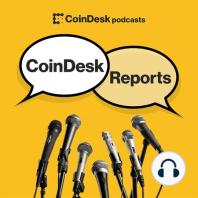41 min listen
ETH 2.0: ‘Keep It Simple’: Prevent Your Eth 2.0 From Being Slashed
FromCoinDesk Reports
ratings:
Length:
34 minutes
Released:
Feb 25, 2021
Format:
Podcast episode
Description
In this episode, Christine Kim and Will Foxley discuss with the co-lead developer of Prysmatic Labs, Raul Jordan, the common reasons behind slashing events on Ethereum 2.0 and how they can be prevented. “Keep it simple.”Jordan’s best advice to prevent validators who have staked 32 ETH (worth roughly $56,500 at time of writing) from being booted off the Eth 2.0 network for suspicious behaviour was to make operations as straightforward and uncomplicated as possible. “A lot of people try to get really clever at their staking setup. They’re like I need zero down time. I cannot afford having my software down for a second. … A lot of stakers at home try to go for these really complicated setups and I mean to be honest they’re fairly sophisticated. They know what they’re doing but there’s always room for something to go wrong,” Jordan said. Validators are the equivalent to miners on Ethereum’s new proof-of-stake blockchain dubbed Eth 2.0. These users earn rewards in the form of interest on their staked ether for running software that verifies and helps produce new blocks. Over-engineering validator setups can lead to what are called slashing events, according to Jordan, which are penalties exacted by the network to deter users from launching malicious attacks. However, it’s impossible for the software of Eth 2.0 to discern what is a premeditated network attack from an honest mistake by a sophisticated user simply trying to maximize his or her earnings as a validator. As a result, the best way to ensure a validator on Eth 2.0 isn’t slashed is to accept some downtime on the machine. Downtime means any period of time where validator operations aren’t actively running or connected to the internet and therefore not earning rewards. “If you’re online for only two-thirds of the year, you’re still profitable as a validator. So why do this? The risk is not worth it,” said Jordan. “If you get slashed you’re going to lose some funds. You’re going to get ejected [from the network] and then your ether is locked in there not earning anything until you can withdraw in the future.” Mining on Ethereum and other proof-of-work blockchains such as Bitcoin are notorious for being activities where feats of engineering and specialization actually increase the chances of earning rewards. Application-specific integrated circuits (ASICs) are prime examples of technologies built to maximize the profits of Ethereum and Bitcoin miners. However, the potential for slashing on Ethereum 2.0 is one of the main characteristics of the network that discourages similar types of innovation from profit-motivated validators.If there’s any upside to slashing, it’s that it has encouraged Eth 2.0 developers like Jordan to work harder at building standards between all Eth 2.0 software clients to make the user experience as smooth and as seamless as possible. To learn more about these standardization efforts and how they’re helping educate users about running validator operations on Eth 2.0, listen to the full podcast episode with Christine Kim, Will Foxley and Raul Jordan. For more weekly insights on Eth 2.0 development, consider checking out Foxley and I’s weekly newsletter, Valid Points. Links mentioned in the podcast: Raul Jordan’s blog post - https://medium.com/prysmatic-labs/eth2-slashing-prevention-tips-f6faa5025f50 See Privacy Policy at https://art19.com/privacy and California Privacy Notice at https://art19.com/privacy#do-not-sell-my-info.
Released:
Feb 25, 2021
Format:
Podcast episode
Titles in the series (100)
THESIS: CoinFund’s Jake Brukhman Talks Active Investing in the DeFi and NFT Space by CoinDesk Reports
